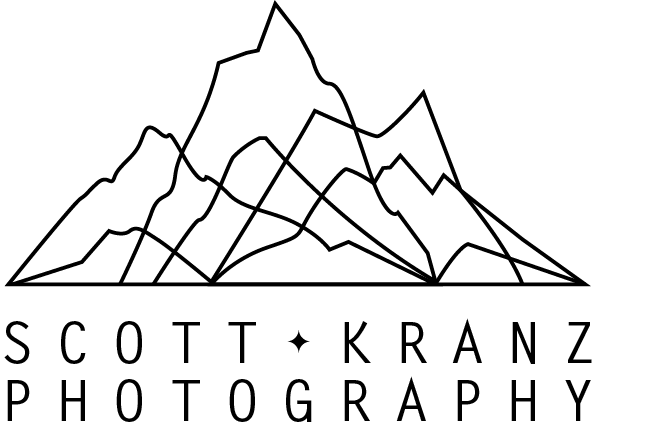6 Pieces of Go-To Adventure Gear
written by Scott Kranz | Outdoor Adventure
I like to travel light—both in everyday life and in the mountains. Spending time in the wilderness makes me feel free, unburdened from worries and to-do lists. I try to keep my pack light as well, so I can cover more ground. Outdoors, I have less on my shoulders—both figuratively and literally.
But a handful of items almost always go into my pack, whether it's a single overnight or a week-long expedition. Here are six things I carry on any hike, climb, or ski trip that I've found to be particularly invaluable.
1. Headlamp
Using a headlamp, rather than a flashlight, frees up your hands. Today’s LED models are astonishingly bright and lightweight. And the headlamp I own has multiple settings (such as flood, spot, and red night vision), and also has dimming, which is great when I need just a little light while setting up my tent or making dinner—without the risk of blinding my adventure buddies. And I often wrap the headlamp's band around a full water bottle to create a makeshift “lantern” at camp. My headlamp also locks, a great feature that prevents it from switching on inside my pack and draining the battery.
Headlamps can be helpful tools for my night photography, too. During long exposures, I may use my headlamp to “paint” the objects in the frame's foreground. Briefly casting light on the trail or a rock or the tent can help bring out the detail in the captured shot.
2. Rain jacket or shell
When it’s raining, a water-proof or water-resistant jacket is essential to keeping you warm. I prefer jackets that don’t go below the waist, so I can move more freely as a position myself and my camera to get up the mountain or take a photograph. But mostly, of course, it’s important that the jacket is lightweight, breathable, and water-resistant.
I also use my shell to keep my sleeping bag dry at night. Unless you're camping in the driest of deserts, it's common for condensation to build up on the interior tent walls at night. If your sleeping bag comes into contact with the damp walls, that condensation can seep in. To prevent this, I often zip up my shell, turn it upside down, and tuck the bottom of my sleeping bag inside. The waterproof exterior blocks the moisture, so I never wake up with cold wet feet.
3. GPS Device
In an emergency, when you have no cell-phone service and no one is around to help, a GPS location device, such as an inReach or Personal Locator Beacon could be the one thing that gets you out alive. Thankfully, I’ve never had to use mine. But I always keep it in my pack—because accidents can happen in the mountains when you least expect it.
4. Tripod
I like to carry a carbon-fiber tripod because it’s lightweight. Of course the tripod is key for taking long exposure and night shots. In particularly windy conditions, I hang a bag or another piece of gear from the hook attached to the bottom of the center column, which keeps the camera extra sturdy when I’m shooting. In addition to its use as a camera mount, a tripod also works as a great place to hang a pack or boots off of the ground while you’re away from your camp for a minute or while you’re sleeping in an area where small critters are your only concern. It’s never fun to find the food bag torn open or a pika sleeping in one of your boots!
5. Bandana
They’re lightweight, so I carry a couple of bandanas in my pack. Tucked into the back of a hat to cover my neck or wrapped across my face, they offer extra protection from the sun’s UV rays. I’ve used bandanas to tie water bottles and other items onto my pack or to grab the metal handle or edge of a hot camp pot. (I’ve even heard of campers using clean ones to strain noodles, but I can’t imagine it improves the flavor.) I’ve also used a clean white bandana to diffuse light from a headlamp or camp lantern when taking nighttime pictures of camp, wrapping the cloth around the light within the frame to soften its glow.
6. Duct tape
In a pinch, duct tape can solve almost any problem. Hole in your rain jacket? Fix it with duct tape. Ski boot clasp won’t close? Wrap it with duct tape. Tiny cut on your hand? Without a band-aid, try some duct tape until you can care for the wound properly. I sometimes use it on ice axes, crampons, and trekking poles to prevent the sharp edges from tearing other materials in my pack. There’s no need to carry the whole roll you bought at the hardware store: simply wind a small portion of the tape around one of your trekking poles or your water bottle and—voila—you just freed up more space in your pack.
ABOUT THE AUTHOR
Scott Kranz is a full-time outdoor photographer and filmmaker based in Seattle. Born and raised in Minnesota, Scott moved to Washington State in 2013 and first explored the Cascade Range, which sparked a lifelong love of outdoor adventure and photography. Since, he’s come to partner with some of the world’s leading brands and shot on all seven continents.


